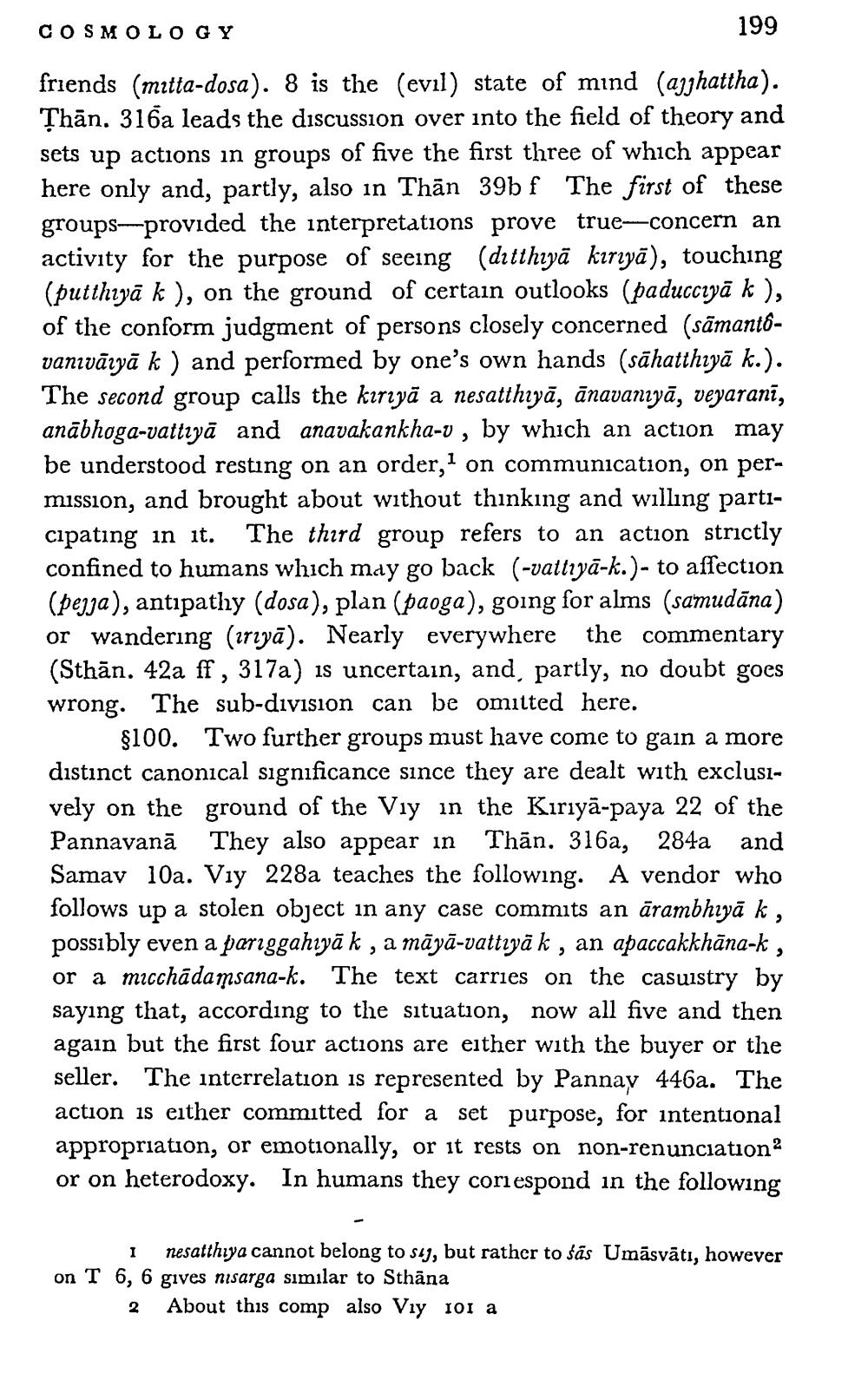________________
COSMOLOGY
199 friends (mitta-dosa). 8 is the (evil) state of mind (ajghattha). Thān. 316a leads the discussion over into the field of theory and sets up actions in groups of five the first three of which appear here only and, partly, also in Thān 39bf The first of these groups-provided the interpretations prove true--concern an activity for the purpose of seeing (ditthiyā kırıyā), touching (putthiyā k ), on the ground of certain outlooks (paducciyā k ), of the conform judgment of persons closely concerned (sāmantovanıvāryā k ) and performed by one's own hands (sāhatthiyā k.). The second group calls the kırıyā a nesatthıyā, ānavanıyā, veyaranī, anābhoga-vattīyā and anavakankha-v, by which an action may be understood resting on an order, on communication, on permission, and brought about without thinking and willing participating in it. The third group refers to an action strictly confined to humans which may go back (-vattiya-k.)- to affection (þegja), antipathy (dosa), plan (paoga), going for alms (samudāna) or wandering (zriyā). Nearly everywhere the commentary (Sthān. 42a ff , 317a) is uncertain, and, partly, no doubt goes wrong. The sub-division can be omitted here.
$100. Two further groups must have come to gain a more distinct canonical significance since they are dealt with exclusively on the ground of the Viy in the Kırıyā-paya 22 of the Pannavanā They also appear in Thān. 316a, 284a and Samay 10a. Viy 228a teaches the following. A vendor who follows up a stolen object in any case commits an ārambhiyā k, possibly even a pariggahıyā k , a māyā-vattiyā k , an apaccakkhāna-k , or a micchādamsana-k. The text carries on the casustry by saying that, according to the situation, now all five and then again but the first four actions are either with the buyer or the seller. The interrelation is represented by Pannay 446a. The action is either committed for a set purpose, for intentional appropriation, or emotionally, or it rests on non-renunciation? or on heterodoxy. In humans they corespond in the following
I nesatthiya cannot belong to say, but rather to sās Umāsvāti, however on T 6, 6 gives nisarga similar to Sthāna
2 About this comp also Viy 101 a




